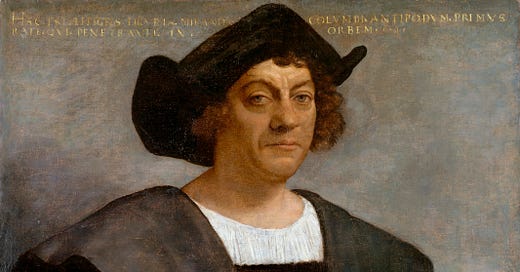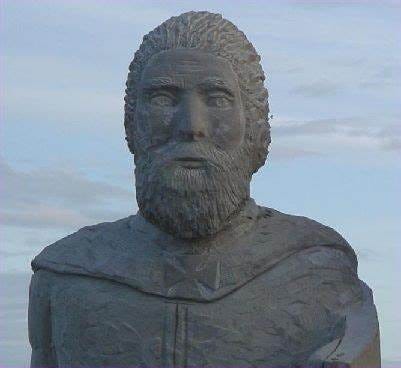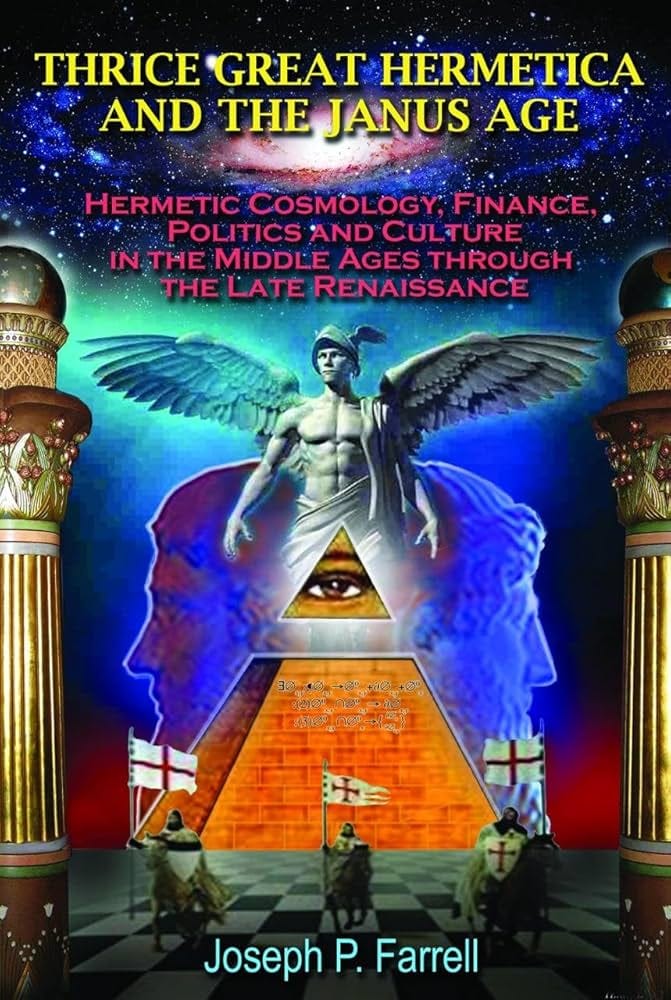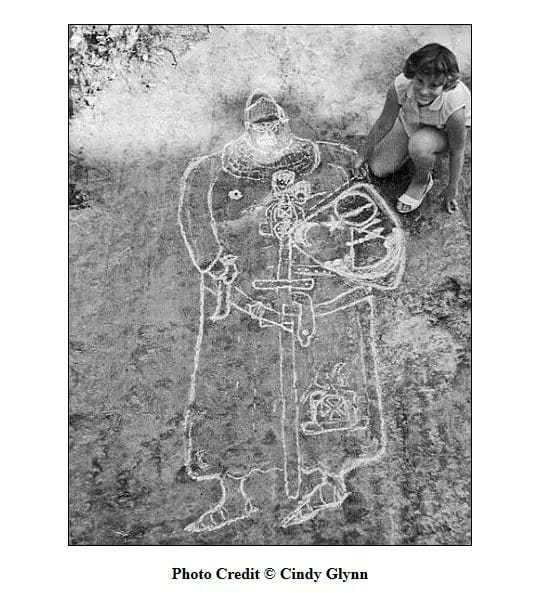Did Columbus “discover” America? How astrology can shed light on forbidden history
Astrologers use the work of historians to inform their understanding of planetary cycles. But can information flow in the opposite direction? Can astrology inform our understanding of history?
Few facts in the historical canon stand on shakier ground than the claim that Christopher Columbus “discovered” America in 1492.
To be sure, there’s the typical objection that there were already people living in the Americas when Columbus and his band of hardscrabble adventurers first sighted the Bahamas in 1492. But let’s take the question in a different spirit, the one in which it’s often meant: “Did other explorers besides the ancestors of Native Americans land on the American continent before 1492?”
The answer here has to be a hard “yes”.
The discovery of a Viking settlement in L’Anse aux Meadows in Newfoundland in Canada in 1960 proved that Norse sailors led by Leif Eriksson reached America around the year 1000AD. The site confirms stories in Icelandic sagas that describe Eriksson finding lands to the west of Iceland, including a place called “Vinland”, believed to be today’s Newfoundland.
Vikings aside, there’s a long list of explorers who may or may not have sailed to the Americas before Columbus ever took a step on American soil, including sailors from Polynesia, Mali, Ireland, the Basque Country and China. Of course, some of the claims are stronger than others, both in terms of plausibility and evidential backing.
There are even suggestions that America was familiar to civilisations of the ancient world, including the Phoenicians, Romans and ancient Egyptians. In the 1990s, German toxicologist Dr Svetlana Balabanova tested hair samples from Egyptian mummies and discovered traces of nicotine and cocaine, both of which come from plants native to the New World.
It’s hard not to smirk at the image of a Pharoah snorting lines. But more seriously, this is the sort of finding that mainstream historiography and archeology find highly inconvenient. The results have been swept under the proverbial carpet, with claims Balabanova’s results must have been the result of sample contamination. Move along, nothing to see here! Leave our precious Darwinian historical timeline alone!
But it’s another alleged “discoverer” of America that I’m interested in here, and his name is Henry Sinclair, Earl of Orkney. There are controversial claims that Sinclair landed in the Americas more than a century before Columbus, in 1398. Are they true? And can astrology help us to answer this question?
Astrology and history
Astrologers who are interested in history tend to assume that historians have gotten their facts right. When we’re looking to understand how a particular astrological event, like a conjunction, or a transit, or an eclipse, has manifested in history, we start with our ephemeris tables or astrology software, and figure out when the event was in effect.
Take the conjunction of Saturn and Pluto on October the 5th of 1914, the first of three such conjunctions. We know the archetypal natures of Saturn and Pluto, and so we know that the major historical events around this time should have had something to do with the empowerment of societal structures, extremes of restriction and responsibility, great suffering, or a prolonged journey into the underworld. Consider that there was another one of these conjunctions in January 2020 - it’s not too taxing to figure out what that one was all about!
The year 1914 isn’t hard to decipher, so we can note straight away that the First World War broke out on July the 28th of 1914, when Austria-Hungary declared war on Serbia. That’s a few months before our first exact conjunction, though, so we need to check the positions of Saturn and Pluto on that date, and here’s what we see:
Saturn and Pluto may be in different signs here, but they’re nevertheless just over 4 degrees away from each other. Astrologers have different ideas of how close together two planets need to be to be considered “in orb”, which really just means “in effect”, but I suspect most would agree that Saturn and Pluto were well within orb of conjunction at the outbreak of the war.
With all this in mind, we chalk up an astrological correlation: “A conjunction of Saturn and Pluto signalled the beginning of the First World War”. Take the rest of the day off, champ!
This is a simple and clear example of astrology and historiography being in dialogue with each other. There is fairly widespread agreement about when the First World War began, and what it meant. That historical information can inform our understanding of Saturn and Pluto, as well as this particular conjunction and the synodic cycle it initiated.
But what about events that lack that kind of consensus? Can we use astrology as a tool to help us understand the past, and even to inform the writing of history itself? Let’s consider the case of Henry Sinclair and his supposed discovery of America back in 1398.
Henry Sinclair and the Zeno manuscript
The claim that Sinclair arrived in America almost a century before Columbus rests on a controversial document: “the Zeno manuscript”. This is a collection of letters and a map published by the Venetian diplomat and nobleman Nicolò Zeno The Younger in 1558.
The letters are claimed to have been written by Nicolò’s Venetian ancestors, the brothers Nicolò and Antonio Zeno. In the letters, the Zeno brothers describe sailing to the Orkney Islands in Northern Scotland, where they meet and come into the service of a man they refer to as “Zichmni”. By following an ancient map in possession of the Zeno family, the brothers and Zichmni sail to the west in a bid to “discover land”. They journey first to a place they call “Egroneland”, which seems to be Greenland, then much further West to a place they call “Estotiland”, whose description bears resemblance to parts of North America. This voyage supposedly takes place in the year 1398 – remember this year, because it’s key to what I’ll be arguing in a moment.
Mainstream scholars generally consider the manuscript to be a hoax invented by Nicolò the Younger to glorify his family history. But those in the alternative research field, including notable author and scholar Joseph P. Farrell, are much more open to the idea. In his fascinating book, Thrice Great Hermetica and the Janus Age: Hermetic Cosmology, Finance, Politics and Culture in the Middle Ages through the Late Renaissance, Farrell explores the possibility that “Zichmni” was really Prince Henry Sinclair, Earl of Orkney, and that together with the Zeno brothers, he did indeed “discover” America, almost a century before Columbus.
Sinclair is a real historical figure who is known to have lived from around 1345 to 1400, and so was almost certainly alive when this voyage supposedly took place. He is also said to have been a member of the Knights Templar.
Farrell notes some interesting evidence in favour of the voyage, including the existence of the so-called “Westford Knight”, a petroglyph depicting a European knight found on a rock in the outskirts of the town of Westford in Massachusetts, believed to have been created by American indigenous people.
The Knight is depicted in full armour, with a sword and helmet surmounted by a bird. Farrell writes that experts date the style of helmet to the period of 1350 to 1400, and confirm that it is typical of that of a knight from Northern Scotland from that period. This is seen as corroborating evidence that the Zeno voyage was very real, and that it left a strong impression on the Native Americans who encountered the Norse adventurers.
Again, mainstream historical consensus is that the Zeno manuscript is fake. They cite the lack of resemblance between the names “Zichmni” and “Henry Sinclair”, the lack of existence of some of the islands mentioned, and the lack of supporting evidence in Venetian records. I won’t get into more of Farrell’s case that this voyage really happened – read his fascinating book for that.
What I want to add here is how I think astrology can be used as corroborating evidence that Henry Sinclair and the Zeno brothers really did visit America in 1398.
The Pluto-Neptune cycle of 1398-1891
If you’ve followed my work on YouTube, you’ll be aware that I’ve done a considerable amount of research on the 492-year synodic cycle of Pluto and Neptune. This cycle seems to govern deep societal trends that form the bass notes of historical development.
In Pluto, we have the (dwarf) planet of power and the roiling forces of the underworld. In Neptune, we have the oceanic planet of faith, imagination and the ideal. In my video work, especially the New Age 2026 series, I’ve shown how these cycles have a strong bearing on history, including the intersection between power and religious belief:
Now, a key principle to bear in mind in astrological work is that the cosmos is fractal. This principle expresses itself in nature — think of the resemblance of the atom to the solar system. But it also expresses itself in time and consequently in astrology. In particular, synodic cycles, which are cycles formed by the interaction between two planets, are fractal.
The events that take place around the time of conjunctions foreshadow the greater developmental trends that will come over the course of the cycle they initiate. And so we can get a good idea of what a cycle promises by looking at the events that take place as a conjunction forms, as well as the cultural and spiritual zeitgeist. Conjunctional periods are like microcosms of the cyclical macrocosm.
The last Pluto-Neptune conjunctions came in 1891 and 1892, initiating the current cycle we’re living through now. The previous set of conjunctions before that came in 1398 and 1399. And here’s where your astrological antenna should be ringing, because 1398 is the very year that “Zichmni” and the Zeno brothers supposedly took their voyage to America.
The conjunctions of 1398 and 1399 (and 1891 and 1892) took place in Gemini, the Mercurial sign of the twins. The cycles these Gemini conjunctions have initiated have brought massive intellectual advances, the mapping of the planet, and powerful bifurcations in thought, faith and geopolitics.
We’re seeing that in the current cycle, which saw the Cold War in the 20th century, and seems to be experiencing a second one right now. And we saw it in the previous 1398-1891 cycle, too. For example, between 1378 and 1417, the Catholic Church was split in two, in what is called the Papal or Western Schism. During this period, bishops in both the French city of Avignon and in Rome itself claimed to be the rightful pope. Europe was split — some state rulers supported Rome, others Avignon. This was a foreshadowing of what was to come later in the cycle, in the 16th century, as Pluto and Neptune reached their long sextile phase: the Protestant Reformation, and the bifrucation of Christianity into its Catholic and Protestant branches.
Similarly, around the time of the 1398-99 conjunctions we saw the emergence of church reformers like the Czech Jan Hus and England’s John Wycliffe, who both preached that the church was corrupt and needed to be reformed. They also argued that the Bible should be written in vernacular language, rather than Latin, so that ordinary people could read it, bypassing the priest class’s monopoly on the interpretation of scripture.
What came in the cycle that followed? Well, around 1440, Johannes Gutenberg invented his printing press. And in 1517, Martin Luther emerged, making very similar arguments to Hus and Wycliffe, initiating the Reformation with his 95 Theses. The printing press is generally seen as a driving factor of what came next, allowing the mass printing of the Bible, mass literacy, and the resulting transformations in consciousness. Think about how this cycle began with conjunctions in Gemini, the sign of Mercury, the clever messenger of the gods.
And so, back to the Zeno brothers and “Zichmni”. In the Zeno manuscript, Nicolo describes the place he sailed to in 1398, the very year of a Pluto-Neptune conjunction, as “a very great country, and like a new world”. This is one of the first times the phrase “new world” was used in history. And what happened in the cycle that followed? Well, in 1492 Christopher Columbus “discovered the new world”. We have a bifurcation emerging here — between the old world and the new. Think Gemini, the twins.
What this suggests to me is that the Zeno manuscript is not a hoax, but a document that describes real events. These events, taking place as Pluto and Neptune formed their conjunction, foreshadowed what was to come out into the open over the course of the cycle that was initiated at that time.
Here, astrology backs the claims of Farrell and other researchers who believe the Zeno manuscript to be legitimate. And this suggests ways in which astrology can be used to add weight to disputed claims about history. It suggests that history and astrology can engage in dialogue, with information flowing both ways, not merely from the history books to the work of astrologers.
Of course, you’d be hard pressed to find a professional historian who’d find this compelling! Academia isn’t there yet, and won’t be for a long time. But some day, some day…












Coke snorting pharaohs . . . Lol, it makes perfect sense!
A compelling work, thank you.